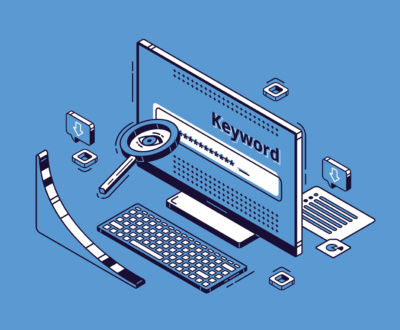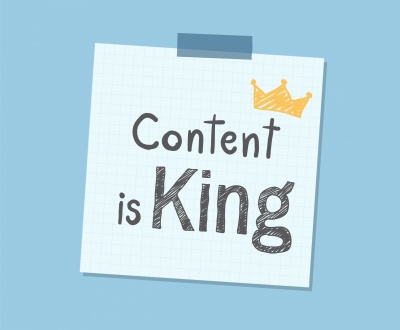The Complete Guide to the Costs of Digital Marketing Campaigns
When considering setting a budget for your business’ digital marketing, it’s critical to truly understand how the costs of organic search, paid search and social media campaigns are calculated, and the different factors that can affect the cost, as well as the success, of digital marketing.
There are seemingly countless ways to market a business online. When choosing the right mix of digital channels and platforms, it’s absolutely essential that businesses give serious consideration to what it will take to succeed with online marketing campaigns, and the level of investment needed to achieve those goals. Of course, with so many marketing channels to choose from, it can be difficult to get a clear picture on what it costs to put together an effective and impactful set of digital campaigns designed to drive real business results.
For this reason, the team here at WMT feels it’s our responsibility to equip you with the knowledge and clarity to fully understand where the costs of digital marketing really come from, and what you can expect when you’re presented with a quote or estimate from an agency for SEO, SEM, or social media marketing campaigns. Plus, you’ll learn about how not all agencies work the same way, along with some cautionary advice on how sometimes cheap digital marketing campaigns can actually end up costing your business a lot more in the long run.
We’re going to break this article into three sections; SEO, SEM, and Social Media. This is because each type of campaign inherently has distinct differences from the others in terms of the mechanics of how they work, the resources required for them, and the success metrics used to gauge performance. By considering these unique aspects, you’ll gain a deeper understanding of the specific factors that can affect the costs of each type of campaign.
Let’s get started with a look at the costs of Search Engine Optimization (SEO) campaigns and the various considerations that are used to determine the investment needed to achieve the desired results and get your business rising up the ranks of Google’s search results pages.
Understanding the True Costs of SEO
The overarching principles behind how search engine optimization works are fairly simple when you take a step back and look at it from a high level viewpoint. Whenever a person performs a search for information online, search engines work to deliver a list of the sites that have the most valuable content, the most intuitive navigation, the cleanest coding, the best mobile experience, the fastest load times, and the strongest reputation around that particular piece of information. If your site fits that description, then there’s a good chance you’ll be in the top spot on the search results page. If your site doesn’t deliver on all those criteria, then there’s no way to be 100% sure of where your site will rank.
SEO is the process of continually working to ensure that your site is as fast, clean, informative, intuitive, and well-designed as possible. We say ‘continually’, because the way search engines rank sites is always evolving in order to deliver better quality results, weed out the low-quality sites, and adapt to new sources of data that are introduced into the digital world. Because of this, it is of utmost importance that SEO should never be considered a ‘one-and-done’ project, but rather one requiring regular attention and ongoing commitment to keep momentum moving forward. The web is not a static environment, and there are always going to be competitors out there that will be happy to take over your spot on the results pages if you let them.
These facts help to explain why SEO is often referred to by its other name, ‘organic search’. It’s an apt description, as SEO works to help your website ‘grow’ and ‘evolve’ to be more powerful and authoritative in the eyes of a search engine. Rather than just sending Google a check and paying to show up on the first page, your website needs time and effort in order to grow its search engine visibility ‘organically’.
SEO for a Brand New Website
For brand new websites, SEO needs to be a key consideration from the very beginning of the planning and development process. If SEO is an afterthought, or added mid-way through the creation of a new website, it may take additional work in order to correct any factors that were not properly implemented, and can result in unexpected costs. Planning for a clean, optimized site from day #1 is always the best way to go.
SEO for a new website needs to be factored into all aspects from beginning to end, including everything from the structure of the navigation, to the back-end code, to the hosting provider, to all content elements that live on the pages of your site, and everything in between. It’s important for all web developers and content creators to follow established SEO fundamentals and best practices. Doing things properly from the very beginning will maximize the synergies that can be achieved when everything on your site works together for the same purpose.
Due to the fact that SEO is tied so tightly into the actual development process of a new website, it can be difficult to accurately estimate the costs of it as the tasks associated with incorporating SEO are occurring at the same time as many other web development and content creation tasks.
When thinking about costing SEO as part of a new website development project, you’ll need to consider whether you’re doing the bulk of the web development in-house, or if the majority of the work is being performed by an outside agency.
- If the website is primarily built in-house, you may choose to leverage an external SEO consultant who will work to train and educate your internal team on SEO best practices which they can follow as they progress through the project. This type of approach can be charged either as a one-time project or on an hourly basis for those companies that need ongoing services and support.
- If the website is primarily built by an external web agency, you’ll want to ensure that they are including SEO as an integral part of their development process. If the scope of work or proposal provided by the web development agency doesn’t specifically mention SEO as a major element throughout the entire project, that’s a big red flag and you’re definitely going to want to address this omission before proceeding.
In either case, because it’s so intertwined with the entire process of web development, the costs SEO for new websites vary significantly based on the type of site being built, the size and complexity, the volume of content needing to be optimized, and who will perform the work. Because of this, it’s not really possible to provide a dollar value ballpark without at least some type of information on the scope of the project in question.
For existing websites, the process begins a little differently…
Initial Site Audit & SEO Analysis of Existing Websites
For an existing website, the first step of an effective SEO campaign is a comprehensive audit & SEO analysis. This top-to-bottom review provides complete technical details on the current state of your business’ website, revealing issues lurking behind the scenes which can hinder your site’s ability to rank more effectively in search. SEO site scans will identify any problems that exist within the site code and on the individual pages themselves, such as duplicate content, broken links, missing data, server errors, sitemap discrepancies, slow load times, and many other types of technical elements.
Typically, a complete SEO audit, analysis and report can cost on average between $750 and $1000, depending on factors such as the scope of the project, the size of the site itself, whether there are subdomains or mini-sites to examine as well, and what the goals of your business are. In general, the more complex the website, the longer the audit will be.
Performing an SEO audit gives the agency the roadmap that will guide and prioritize the fixes required, and helps to create a triage from low priority maintenance tasks to critical emergency issues that need immediate attention. The insights obtained from an SEO audit will help your business accelerate the process and ensure that all optimization efforts are working together for the greatest impact. What this all means is that an SEO audit is absolutely necessary in order to put together a logical and effective organic search engine optimization plan that will achieve the results your business needs.
From the findings of the audit comes the SEO action plan, which dictates the immediate fixes needed to address critical issues and create a solid foundation, as well as ongoing optimization tasks that continually build momentum and authority among search engines.
Progressive & Ongoing SEO Campaigns
The costs of an ongoing SEO plan are directly tied to the volume of work needed to achieve growth targets, but it’s important to also keep in mind that SEO is cumulative. This means that the more you do, the bigger the impact. Furthermore, SEO is a long-term play and won’t deliver immediate results overnight, so make sure you keep this in mind as the positive effects can sometimes take up to 3 months to start making an impact, and up to 12 months to really get the SEO motor up to full speed.
However, don’t let the time needed to do SEO properly lead you into thinking that it’s not worth it. The fact is that, dollar for dollar, SEO is one of the most impactful investments that your business can make, and the ROI over the long term makes the costs seem insignificant when compared to the benefits. SEO will pay back dividends for years to come. The more you do it and the more consistent you are at it, the bigger the payoff will be.
To give you at least some idea on what to expect for a basic ongoing SEO campaign, most businesses can estimate at least $800 per month to effectively cover the most critical aspects and make sure you can maintain your visibility in search engines. These costs cover essential elements such as regular site scans, maintenance checkups to ensure your site stays clean and free of errors, backlink monitoring, updating of core SEO elements, optimization of on-page content, and more.
A more robust and comprehensive SEO campaign would expand on the basics to include things like content strategy, content calendar & topic selection for blogs, blog post writing (usually 4 posts/month avg.), continuous improvements to the site such as adding new content, fixing issues as they arise, and project management of larger-scale SEO optimization tasks. For this type of campaign, estimated costs would start around $2,000/month, and go up depending on the volume of content needing to be produced, and the depth of ongoing optimizations that are required.
Now that we’ve covered the basics of what’s involved in organic search engine campaigns, let’s now switch gears to the other side of search engine marketing and discuss the various costs related to managing effective Paid Search Campaigns.
Costs of Paid Search Marketing Campaigns
Although organic search and paid search both work to achieve the goal of raising the profile of your website and gaining more visibility on the search results pages (SERPs), they go about it in very different ways. While we described SEO earlier as being a long-term investment that takes time to bear fruit, paid search campaigns are able to start driving business results rapidly.
In the simplest terms, paid search campaigns are essentially auctions for premium space on the search results pages. You and your competitors bid against each other for the top spot when a potential customer does a search for information about products or services you provide. While the organic search results are based entirely on how Google’s algorithm calculates the relevancy and authority of your site around a particular topic, paid search works by awarding the top spot to the highest bidder.
Advertising Costs for Cost-Per-Click Paid Search Campaigns
The base advertising costs for running a paid search campaign can be estimated using different tools that are accessible directly through the Google Ads interface, as well as other paid search ad platforms. Costs are generally shown as a ‘per click’ model, which means that each click that your ad gets, you are charged that particular amount. There is often the option to select a ‘per impression’ billing model, where you are charged a set amount for every 1000 times that your ad is served. Regardless of which option you choose based on your campaign goals, calculating your estimated advertising costs is a fairly simple process.
Using an expansive archive of historical performance data and machine learning algorithms, your SEM ad platform will allow you to view estimates of what it could cost your business to bid on certain keywords and phrases. For example, simply type in your target keywords in to the Google Ads Keyword Planner, and you’ll quickly receive a report on how much the average cost-per-click (CPC) is for each keyword, along with data on search volume trends, and an estimate on how competitive the bidding might be.
Using these estimated click costs, you can quickly expand on how much your click budget might need to be each day, week, or month in order to drive the traffic that your business is looking to acquire. For example, a keyword related to the products or services your business offers may have an average estimated CPC of around $0.50, which is fairly low. In this case, if the keyword is not being aggressively bid on by competitors, you could potentially drive a high volume of traffic for a fairly low cost.
On the other hand, highly competitive keywords can be far more expensive. For example, a keyword such as ‘lawyer in toronto’ could be upwards of $15 or more for a single click. However, this high CPC is absolutely worth every penny when the value of a new customer justifies it. Using the example of ‘lawyer in toronto’, the resulting payout from a legal settlement can be quite lucrative for a law office, so this level of advertising cost to acquire a new client makes a lot of sense, especially in such a highly competitive industry.
Determining what your monthly click budget should be for a paid search campaign can be a little tricky, as it depends greatly on the average CPCs of the keywords you’re going to be aiming for and the objectives of your business, but you can consider the click costs of a basic paid search campaign to run between $1000 – $5000 per month. For larger scale campaigns, or for those industries where the value of a new customer is much higher, monthly click costs can be upwards of $25,000 or more. Again, this is entirely dependent on the size of the business, the value of a customer, and the competitive environment, so these estimates should only be used as a base reference, and not a specific recommendation.
Ongoing Campaign Optimizations & Paid Search Strategy Adjustments
Of course, there are many other factors that can influence how easy it is for your business to acquire the top spot on the SERPs for any particular keyword, such as how well optimized your campaigns are and the quality of the landing page experience of the destination URL, among many others. It’s because of these multiple factors that the costs of running an effective paid search campaign include more than just the advertising click costs. Ongoing management and optimization of the campaigns is the key to really driving results in SEM.
Generally these types of ongoing optimization and campaign management tasks are billed on a monthly basis, and broken down by the number of hours dedicated to review, monitoring, analysis, and refinement of campaigns, along with any other changes that your digital marketing agency implements over time. For a basic SEM campaign, WMT generally recommends about 6-8 hours per month dedicated to ongoing management, coming in at around $540 -$720 per month. For more complex campaigns, the number of hours dedicated to ongoing management can go upwards of 15hrs to 20hrs per month, or possibly more, with an estimated cost range of approximately $1,350 to $1,800 and up.
Investing in ongoing campaign management is required in order to truly maximize the ROI of paid search efforts and adapt with evolving competitive environments, seasonal trends, and consumer behaviour changes that may occur over time. Much like SEO, paid search should not be viewed as a ‘set it and forget it’ marketing element, but rather one that reacts proportionally to the effort and resources that are put into it, in terms of both overall click budgets and in continual optimization actions.
One more thing to note is while WMT does not charge a % fee back to the client on click costs, some agencies do have this as part of their pricing structure. This is important to be aware of, as this can sometimes be a hidden fee that other agencies won’t break out on their invoices, but can significantly affect the ROI of your paid search campaigns. At WMT, we charge only for the work done to manage and optimize your campaigns, while the direct costs of advertising are charged directly back to the client without any additional markup or inflation. If you’re not sure if your current paid search agency is doing this, we recommend that you investigate further to see if you might actually be paying more than you should be for your SEM ad costs.
Social Media Marketing
Participating in social media requires a very different approach than search engine campaigns. The focus on social media is mainly on content, and how to use valuable, engaging content to drive business and influence users to take action. Nevertheless, much like search engine marketing, there are both organic and paid elements that make up a successful and impactful social media marketing campaign.
Organic social media relies on a steady stream of interesting and valuable content being shared through social channels, encouraging users to engage with the content and form communities around the business’ pages and profiles. Paid social media campaigns focus on promoting specific pieces of content to defined groups of users based on interests and other demographic criteria, or by promoting a business’ social media page, website, or products/services directly through the social media platform itself to attract a larger audience of relevant users.
Starting with the basics, it’s important to ensure that a business’ social media profiles and accounts are optimized and complete, and aligned with the overall brand and other elements of digital strategies in place across the web. Much in the same way that an SEO audit pinpoints problem areas on a website, a social media audit helps to provide the roadmap needed to refine profiles, raise visibility, and increase the performance of social media campaigns with a series of improvements and optimizations.
Furthermore, it is necessary to set up social media advertising accounts on the platforms your business will use. This process should also include ensuring that these ad accounts are properly connected and integrated with your business’ other digital platforms and assets, such as your website and Google Analytics. This is essential in order to facilitate effective social media advertising and provide accurate tracking of campaign performance. For basic social media profile optimizations and setup of a social media advertising account, costs typically start at around $720, and can go up depending on the number of accounts needing to be optimized, and the complexity of the ad account setup.
Creative Assets & Content Generation for Social Media
Creative materials and content are the fuel that keeps your social media campaigns running and generating results, so you’ll need to allocate an appropriate level of resources towards ongoing social media management. Paid social media campaigns require regular injections of fresh creative to remain impactful, and social media ads that remain unchanged for weeks at a time run the risk of becoming stale and less effective, leading to declines in performance over time. On the organic side of your social media, success depends on frequent posts of valuable and engaging content, such as blog posts, articles, videos, photos, news, product or service features, and others.
When planning for any type of social media campaign, it is necessary to account for creative production and content generation as part of the costs. With internal resources, these costs are represented in the form of wages and overhead, but they should definitely still be considered. For companies who need external resources to assist with content generation and creative production, agencies typically bill on an hourly rate, or can approach it on a project-by-project basis. Regardless of how the costs are incurred, it’s important to ensure that your social campaigns are receiving fresh creative in terms of image assets, copywriting, video content, educational articles, informative blogs, and other types of high-value content that is optimized for delivery on social media channels.
Incorporating Influencers in Social Media Campaigns
Leveraging the wide reach and passionate audiences of popular online influencers is a powerful way to expand your social media campaigns and drive even greater results. These types of influencer campaigns can come in a wide variety of formats, from one-off endorsements or reviews, to ongoing relationships and long-term brand alignment. Furthermore, choosing the right influencer is critical, and approaching the campaign with a specific purpose and defined goals to achieve are essential to setting the parameters of an influencer campaign and for accurately measuring success.
Even a basic influencer campaign typically requires a budget of around $10,000/month to cover all the associated costs of sponsorships, compensation, creative production, promotion, and other related costs. Because of the significant investment needed, it’s important to look at both the short-term and long-term benefits of influencer campaigns.
A well-structured and strategically-planned influencer campaign will take about 6 months to really build the long-term impact most businesses are looking for, however even over the short-term the effects can be quite noticeable. With the right mix of content, delivery, personality, and audience characteristics, even a single piece of top-quality content published by an influencer can drive a substantial spike in online activity around your brand almost immediately upon going live. In other cases, the build-up can be slower, but this aspect is more tied into the nature of the content, the makeup of the influencer’s audience, and the objective of the campaigns.
Influencer marketing can be a big competitive advantage for your business, however the keys to success lie in choosing the right influencer, setting the right goals, and investing the necessary resources to achieve them. In a nutshell, it takes more than just some free products or the promise of ‘exposure’ to make an influencer campaign really work for everyone involved.
How Cheap Digital Marketing Ends Up Costing You More Than Good Digital Marketing
As with any discussion on costs related to marketing, the question is inevitably raised; “does it have to cost this much?”. As much as many agencies would like to just simply say ‘yes’, the real answer is that it’s more complicated than that. The old adage of ‘you get what you pay for’ is particularly relevant when it comes to the investment needed to do digital marketing properly.
This isn’t necessarily to say that big budgets win and small budgets lose. In fact, it’s more about setting the RIGHT budget, rather than simply going big. Successful digital marketing campaigns in search engines and social media depend on allocating budgets wisely for maximum impact. This means you can’t just throw all your budget at click costs and forego analysis, management, and creative production. Conversely, you can have the best creative and dedicated campaign management in place, but if the ad spend isn’t sufficient your daily budgets will be exhausted before your campaign can really start working.
In the end, setting a budget for digital marketing that’s too low will end up hindering many aspects of the campaigns that are critical to achieving your results. Optimization of search engine and social media campaigns requires analysis, and effective analysis requires data. You need enough data so that you can gain intelligent insights and make strategic changes designed to continually grow the impact of your marketing.
When the budgets are too small and the data is not coming in fast enough, it takes more time to really dial in the campaigns, and more time before the ROI of your campaigns are maximized. This means that a better budget allocation from Day 1 will be far more likely to bring in the business benefits in a shorter time frame than campaigns that are underfunded and undermanaged. Setting the right budget for your digital campaigns, rather than just trying to keep the sticker price low, is the secret to making your marketing as affordable and impactful as possible.
In addition to your monthly budget, the duration of your campaigns is also of critical importance to success. Like we mentioned earlier in the SEO section, it can take months for the impact of some types of digital campaigns to have a big impact on your business. Running an SEM or social media campaign for just a few weeks is just not enough time to get things really working. The key is to set a realistic timeline to allow your campaigns to really stretch their legs, while the behind-the-scenes optimization processes work to increase their power and the budgets fuel their performance.
The WMT Difference
When you’re working with WMT, we are committed to your long-term success, and plan for continual optimization, analysis, reporting, and collaboration in order to take your digital marketing campaigns from concept to implementation, and then onward to deliver performance that grows your business. We view your digital campaigns as core components of your business, whether you’re looking to increase the performance of your website, raise your visibility in search engines, or build a thriving community of passionate social media fans.
As part of our commitment to delivering the best possible experience for our clients, we pride ourselves on how we keep your business in the hands of digital marketing professionals with decades of experience in managing all types of online campaigns. Unlike some other agencies who operate by having their senior marketers downloading client accounts to junior representatives to handle the actual execution and management of campaigns, WMT’s team of highly-trained and seasoned digital experts take a hands-on approach to everything we do.
With competitive rates, and the convenience & flexibility of hourly billing, WMT doesn’t lock our clients into complicated contracts loaded with inflated fees. We offer complete transparency in what we do, and how we do it, so our clients are never left wondering what it is they’re actually paying for. This is one of the key advantages that WMT offers over other agencies, and we’re confident that you’ll feel the same way.
Of course, you don’t need to just take our word for it. We encourage you to go out and get competitive quotes from some of the other search engine marketing or social media marketing agencies out there and see for yourself.
If you’re ready to learn more about taking your digital marketing to the next level, or simply want to get a better idea on the costs of certain types of SEO, SEM, or social media campaigns, get in contact with us today. Our experts will be glad to answer any questions you may have and provide a free, no-obligation estimate for you. Let’s start a conversation about what WMT can do for your business!
About the WMT Blog
We are a digital marketing company and want to share ideas as inspiration for current and prospective clients.
Questions? Contact us today for more information!
Request a quick estimate on any of our professional services designed to help brands increase exposure across all the most important touchpoints - SEO, Paid Search and Social Media.











